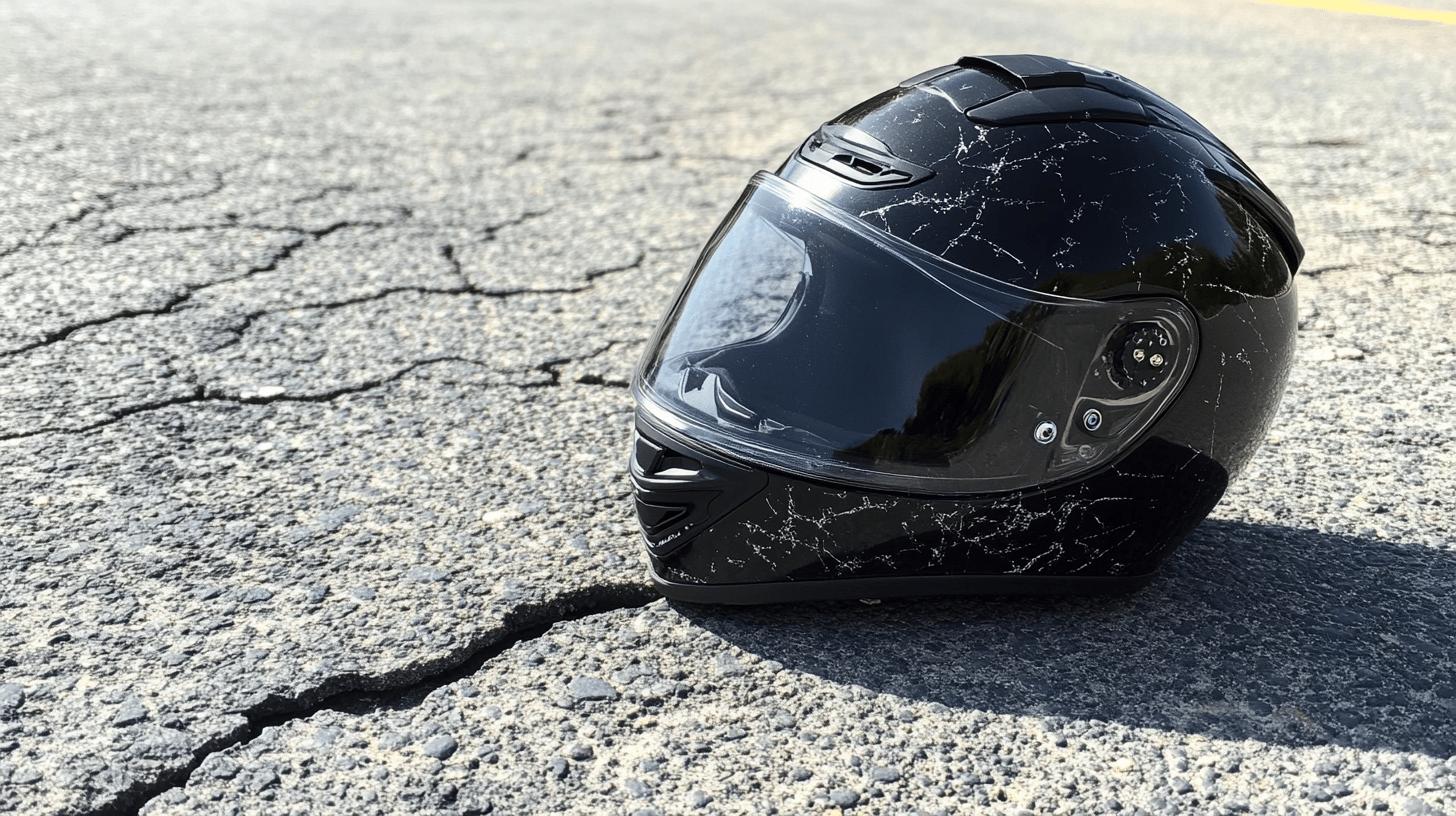How much protection do motorcycle helmets truly offer in today’s high-speed world? For riders, identifying the safest option can be a complex task, with certifications like DOT, ECE, Snell, and FIM as the guiding stars.
Each certification brings its own set of standards and assurances, but not all guarantee the ultimate protection. This article breaks down the array of safety standards and features that define modern helmets and evaluates their performance through real-world statistics.
Discover what makes a helmet genuinely safe, backed by the latest insights and innovations in helmet technology.
Understanding Motorcycle Helmet Safety Standards

Motorcycle helmet safety certifications play a crucial role in ensuring the protection levels offered by different helmet models. These certifications are a testament to rigorous testing procedures that evaluate a helmet's ability to withstand impact forces, penetration, and retention system effectiveness.
By adhering to these standards, manufacturers can assure riders that their helmets provide a baseline level of safety. This is particularly important as riders navigate diverse terrains and conditions, where the risk of head injuries can be significant.
The DOT (Department of Transportation) certification is a standard primarily used in the United States. However, it's often criticized for being outdated, as it allows manufacturers to self-certify based on the compliance of their products.
The ECE (Economic Commission for Europe) standard, recommended as a minimum, is more rigorous, requiring third-party testing before a helmet can be certified. Snell certifications are more stringent and are particularly favored for track use due to their comprehensive testing procedures.
Meanwhile, the FIM (Fédération Internationale de Motocyclisme) standard is considered the gold standard in racing helmets, reflecting the highest level of safety testing for competitive environments.
Internationally, these certifications are applied to ensure that helmets meet the safety demands of different regions. While the DOT standard is mostly seen in the U.S., the ECE certification is widely recognized across Europe and in many other parts of the world, making it a globally accepted benchmark.
Snell and FIM certifications are pursued by manufacturers aiming to cater to racing enthusiasts and professional riders, focusing on maximum safety in high-risk scenarios. The alignment of these standards globally helps in maintaining a consistent safety framework, enabling riders to make informed decisions when selecting helmets.
| Certification | Description |
|---|---|
| DOT | U.S. standard, self-certified, considered outdated by some experts. |
| ECE | European standard, requires third-party testing, minimum recommended. |
| Snell | Stringent testing, specific for track use, favored by racing enthusiasts. |
| FIM | Gold standard for racing helmets, highest level of safety testing. |
Key Safety Features of Motorcycle Helmets

The materials used in motorcycle helmet construction are fundamental to their protective capabilities. Polycarbonate, fiberglass, and carbon fiber are common materials that offer varying levels of impact resistance and durability.
Polycarbonate helmets are known for their ability to absorb energy upon impact, making them a practical choice for everyday riders. Fiberglass provides a good balance between strength and weight, offering enhanced durability while remaining relatively lightweight.
Carbon fiber helmets, although more expensive, are highly prized for their superior strength-to-weight ratio, often favored by racers and performance-focused riders. These materials play a critical role in a helmet's ability to effectively distribute and absorb impact forces, thus reducing the risk of head injuries in an accident.
Impact protection mechanisms are equally important in ensuring a helmet's safety. Multi-density EPS (Expanded Polystyrene) foam is commonly used to cushion the head during an impact, absorbing shock and reducing the force transmitted to the skull.
Additionally, modern helmets incorporate features designed to manage rotational forces, which can occur during certain types of impacts. These features help mitigate the risk of brain injuries associated with rotational motion.
Reinforced chin bars offer additional protection to the lower face and jaw, crucial in frontal collisions. By understanding these mechanisms, riders can better appreciate the technological advancements that contribute to the overall safety of their helmets.
-
Multi-density EPS foam for shock absorption
-
Rotational force management features
-
Reinforced chin bars for added facial protection
-
Lightweight materials for enhanced comfort
-
Energy-distributing outer shells
Comparing Different Types of Motorcycle Helmets

Motorcycle helmets come in various types, each designed to cater to different safety needs and preferences. The primary types include full-face, modular, open face, and half helmets. Understanding the differences in protection and functionality among these can help riders make an informed choice tailored to their riding style and safety requirements.
Full-Face Helmets
How much protection do full-face helmets offer? Full-face helmets provide the most comprehensive protection among helmet types. They cover the entire head, including the chin, which significantly reduces the risk of facial injuries during a crash. The design ensures that the head is shielded from impact, debris, and weather elements.
However, the enclosed structure can sometimes limit visibility and make communication challenging, especially in noisy environments. Riders often choose full-face helmets for their superior safety, especially when engaging in high-speed or long-distance rides.
Modular Helmets
What makes modular helmets convenient? Modular helmets, or flip-up helmets, offer a balance between protection and convenience. They feature a hinged design that allows the front section to be lifted, enabling easier communication and ventilation without removing the helmet entirely.
This versatility makes them popular among touring riders who may need to frequently switch between open and closed configurations. While they do offer good protection, especially when closed, the hinge mechanism can be a potential weak point compared to the solid structure of full-face helmets.
Open Face Helmets
How do open face helmets compare in terms of visibility? Open face helmets, also known as three-quarter helmets, leave the face exposed, providing increased visibility and ease of communication. Riders appreciate the unobstructed field of view and the ability to feel more connected to their surroundings.
However, the lack of chin protection is a significant drawback, as it leaves the face vulnerable to injury in the event of an accident. Open face helmets are often chosen for casual, low-speed rides where full protection is not deemed necessary.
Half Helmets
Why are half helmets not recommended for serious riding? Half helmets offer maximum visibility and ease of use, covering only the top of the head. This minimalistic design appeals to riders seeking comfort and a lightweight option.
Yet, they provide the least amount of protection, leaving the face, chin, and a significant portion of the head exposed to potential injury. Due to their limited safety features, half helmets are generally not recommended for riders who prioritize protection, especially in high-risk riding conditions.
| Helmet Type | Protection Level |
|---|---|
| Full-Face | High |
| Modular | Medium-High |
| Open Face | Medium |
| Half | Low |
Evaluating Helmet Safety Through Real-World Statistics

How effective are motorcycle helmets in reducing fatalities and injuries? Helmets are immensely effective. According to the National Highway Traffic Safety Administration (NHTSA), helmets reduce the risk of death by 37% and head injury by 69% for motorcyclists involved in crashes. This makes wearing a helmet a critical factor in enhancing a rider's survival probability during an accident.
In 47 U.S. states, laws mandate the use of DOT-approved helmets, underscoring their crucial role in rider safety. These statistics highlight the undeniable importance of helmets as life-saving devices, establishing them as a non-negotiable component of motorcycle safety gear.
Do common myths about helmet safety hold any truth? No, they do not. A prevalent myth is that helmets can cause neck injuries due to their weight. However, studies indicate that helmets do not increase the risk of neck injury. In fact, the protective benefits far outweigh any perceived disadvantages.
Another misconception is that helmets impair hearing and sight. On the contrary, modern helmet designs are engineered to minimize such impairments, ensuring that riders maintain adequate sensory awareness. These findings debunk myths that could otherwise discourage helmet use, reaffirming helmets as essential safety gear.
-
Helmets reduce the risk of death by 37% for motorcyclists in crashes.
-
Wearing a helmet decreases the likelihood of head injury by 69%.
-
Studies show helmets do not increase neck injury risk.
- Modern helmets are designed to preserve hearing and sight.
Recent Innovations in Helmet Safety Technology

How have innovations like MIPS and advanced materials improved helmet safety? MIPS (Multi-directional Impact Protection System) is a significant advancement that enhances helmet safety by reducing rotational forces upon impact.
This system is designed to allow the outer shell to slide relative to the head, thus minimizing the rotational motion transferred to the brain, which can be critical in preventing serious brain injuries.
Additionally, helmets are now being crafted with advanced composite materials such as carbon fiber and fiberglass blends, which offer superior strength while maintaining a lightweight design. These materials provide enhanced impact resistance and energy distribution, thereby improving the helmet’s ability to protect against high-velocity impacts.
What role does smart technology play in modern helmet design? Smart technology is increasingly integrated into helmet designs, offering features that go beyond traditional safety measures. Built-in communication systems enable riders to stay connected without compromising safety, facilitating hands-free calls and music streaming.
Heads-Up Display (HUD) technology is another innovative feature, providing riders with essential information, such as speed and navigation, without needing to take their eyes off the road. These advancements not only enhance convenience but also contribute to overall rider safety by reducing distractions and improving situational awareness.
-
Anti-fog visors for clear vision in varying weather conditions
-
Noise reduction technologies to minimize wind and road noise
-
Integrated communication systems for safe connectivity
- Heads-Up Display (HUD) for real-time information access
Final Words
Exploring how safe motorcycle helmets are involves understanding certifications like DOT, ECE, Snell, and FIM. Each plays a vital role in ensuring rider protection. Examining key helmet safety features highlights the importance of materials and impact protection.
Comparing helmet types reveals how each balances coverage, protection, and visibility. Real-world statistics reaffirm helmets’ role in accident survival.
With ongoing innovations, riders can enjoy enhanced safety features in modern helmets. Investing in quality helmets significantly improves road safety and riding confidence.
FAQ
How effective are helmets in motorcycle crashes?
Helmets are highly effective in preventing fatalities and severe injuries in motorcycle crashes. Statistics show helmets reduce the risk of death by 37% and head injuries by 69%, providing critical protection.
How safe is a motorcycle helmet?
A motorcycle helmet's safety depends on its certification and construction. Helmets with certifications such as ECE or Snell meet stringent safety standards, offering reliable protection from impacts.
How many deaths do motorcycle helmets prevent?
Motorcycle helmets are critical in preventing deaths. Studies suggest that helmets save around 1,859 lives each year, emphasizing their role in enhancing rider safety.
What are motorcycle helmet safety ratings?
Safety ratings for motorcycle helmets, including DOT, ECE, Snell, and FIM, assess the helmet's ability to protect in various crash scenarios. Each rating uses different testing methods and criteria to ensure effectiveness.
How safe is a motorcycle helmet according to statistics?
Statistics validate the safety of helmets. In the U.S., helmets significantly reduce the likelihood of head injuries and fatalities, with estimates showing they cut down fatality risk by 37%.
What is the safest motorcycle helmet in 2024?
The safest motorcycle helmets are often those with certifications like FIM or Snell, known for stringent safety standards. Brands recognized for high safety ratings usually feature these certifications.
How are motorcycle helmet ratings explained?
Helmet ratings are explained through certification standards. DOT certification is a basic standard in the U.S. ECE is common in Europe, while Snell and FIM offer higher safety benchmarks for specific uses, like racing.
What are the best motorcycle helmet brands?
The best motorcycle helmet brands are those that consistently produce helmets with top safety ratings, durable materials, and innovative safety features. Brands like Arai, Shoei, and Schuberth often receive high marks.
What are helmet certification standards?
Helmet certification standards include DOT, ECE, Snell, and FIM. These certifications signify that the helmet meets specific safety criteria for protection during crashes.
Are DOT-approved helmets reliable?
DOT-approved helmets are considered reliable for meeting the minimum safety requirements in the U.S., but higher certifications like ECE or Snell might offer enhanced protection features.

Brad Mitchell is a seasoned motorcycle enthusiast with over 16 years of riding experience. He’s spent countless hours on the open road, particularly favoring scenic routes aboard his trusted Harley-Davidson. Brad’s laid-back approach to life and riding gives him a unique perspective on motorcycle gear and safety, which he shares through his in-depth reviews and expert advice on ProtectiveGearz.



